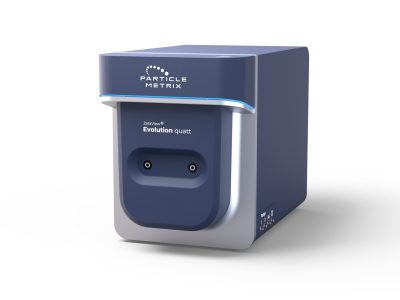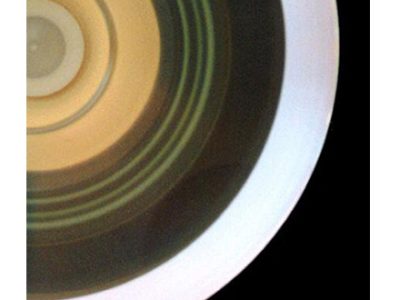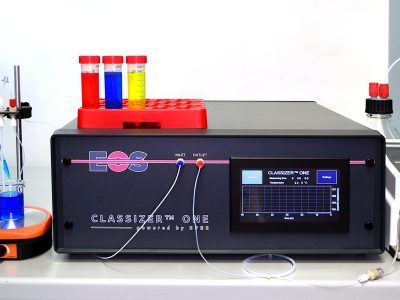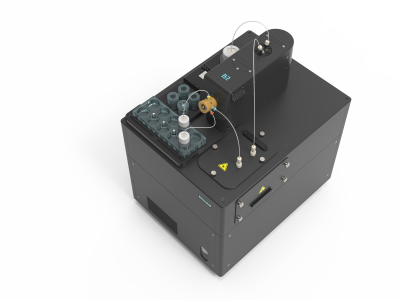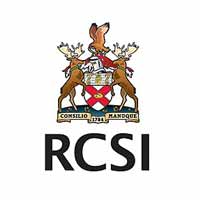Solutions for Particle Characterisation
Particle characterisation is the science of analysing materials at minute level in order to understand and control how they behave. A ‘particle’ can include a liquid droplet, gas bubble or powder, varying from a nanometre to a centimetre in size. As such, particle characterisation is relevant to a wide range of industries and applications.
We provide a range of instruments for effective particle characterisation including the unique CPS Disc Centrifuge Ultra High Resolution Particle Size Analyser, the ZetaView Nanoparticle Tracking Analyser, the revolutionary Classizer ONE for multi-parametric particle analysis and BRAVE Analytics B product line with patented OF21® technology for nanoparticle characterisation. Whether looking to analyse size, shape, concentration or size distribution, we’ll work with you to ensure you get the most out of your investment.
Browse Solutions for Particle Characterisation below; call us on +44(0)1954 232 776 or email info@analytik.co.uk to discuss your requirements with a specialist.
Particle Characterisation Techniques
DCS can be used to analyse particle size distribution. The technique utilises a modified version Stokes’ Law to determine an unknown distribution of particle sizes by measuring the time it takes for particles to settle from a known distance in a liquid of known viscosity and density.
Exposure to high g-force through a centrifuge allows the sedimentation of even very small particles down to just a few nanometres in size to occur quickly, enabling real-time analysis.
The CPS Disc Centrifuge allows the measurement of highly poly-dispersed particles within an approximate size range of 3nm to 60 microns depending on particle density; the CPS can measure particles with as little as 2% size difference from one another. Rather than rely on a predictive algorithm, the CPS physically separates particles and measures them as they pass a light source detector.
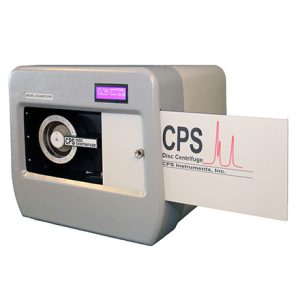 Key benefits of the CPS Disc Centrifuge include:
Key benefits of the CPS Disc Centrifuge include:
- 2 to 10 times higher resolution than any other particle sizing instrument
- Ability to measure low density, neutral buoyancy particles
- Highly reproducible results
- Detect and measure tiny, subtle differences in particle size
- Measure and monitor nanoparticle coating thickness
- Can be used to calculate particle density if size is known
The CPS Disc Centrifuge has applications in a wide variety of sectors, varying from analysis of virus and virus-like particles and gold and silver nanoparticle used in drug delivery systems, to liposomes, carbon nanotubes, polymeric particles, water and oil-based pigments, and printing inks.
NTA is a widely adopted method of measuring particle size, concentration, surface charge (zeta potential) and fluorescence. This versatile technique is capable of multiparameter measurement for many types of particles, saving time and reducing required sample amounts.
The ZetaView® is a next generation nanoparticle tracking analyser that measures hydrodynamic particle size, zeta potential and concentration through analysis of a video sequence at 11 separate positions in a flow cell. Each individual particle in the 3nL field of view is counted and tracked in short video clips, creating accurate concentration calculations and particle size distributions. The ZetaView® combines these Brownian Motion measurements with classical micro-electrophoresis to determine zeta-potential. These parameters can be measured both in scattering mode and in fluorescence mode, for the determination of fluorescently labelled sub-populations.
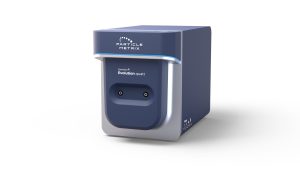 The ZetaView® can measure particle size between 10nm – 1000nm (dependant on sample and laser) and a concentration range of 105 – 109 particles/ml. With several available laser options, the addition of dual or quad laser functionality for fluorescence labelling and multiwavelength excitation, means that its market-leading anti-bleach fluorescence technology has the unique ability to identify two or four different sub-populations in quick succession, without the need to manually change lasers.
The ZetaView® can measure particle size between 10nm – 1000nm (dependant on sample and laser) and a concentration range of 105 – 109 particles/ml. With several available laser options, the addition of dual or quad laser functionality for fluorescence labelling and multiwavelength excitation, means that its market-leading anti-bleach fluorescence technology has the unique ability to identify two or four different sub-populations in quick succession, without the need to manually change lasers.
Ideal applications include:
- Fluorescently labelled nanoparticles
- Extracellular Vesicles (EVs) and Exosomes
- Drug delivery
- Liposomes and Micelles
- Viruses and Virus-like Particles
Now also available: Colocalization NTA (C-NTA) for simultaneous detection of multiple biomarkers on individual particles.
SPES is a patented method to characterise single particles in fluid mixtures, such as heterogeneous liquids and aerosols.
The EOS Classizer™ ONE is a powerful particle analysis platform that utilises SPES to provide detailed information about particles in complex heterogeneous mixtures. With the ability to measure optical classification, particle size distribution, and particle concentration, this multi-parametric technique is ideal for a wide range of applications.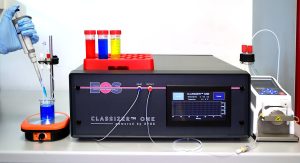
The Classizer™ ONE provides high particle size resolution across a broad range, from 0.1 microns to 20 microns, and can characterise each particle type independently, even in samples containing multiple materials with overlapping particle size distributions.
With its unique capabilities, the Classizer™ ONE is an excellent choice for a variety of applications, including those involving complex, heterogeneous particle mixtures.
Ideal Applications Include:
- Gold & Silver Nanoparticles
- Liposomes & Emulsions
- Encapsulations
- Drug delivery
- Pigments & Inks
- Environmental studies
- Abrasives & Slurries
- Fine chemicals
OF2i® is a new, patented method for particle size measurement. I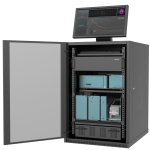 t uses optofluidic forces to actively transfer momentum to nanoparticles via laserOF2i® can provide detailed insights into nanoparticle populations and track changes in size distributions and concentrations in real-time.
t uses optofluidic forces to actively transfer momentum to nanoparticles via laserOF2i® can provide detailed insights into nanoparticle populations and track changes in size distributions and concentrations in real-time.
BRAVE B-Continuous and BRAVE B-Curious are cutting-edge technologies for real-time nanoparticle characterisation. They monitor particle size, distributions, and concentration during production and in laboratory settings, providing rapid and accurate insights. They offer high throughput (up to 3000 particles/min for BRAVE B-Continuous, 1000 particles/min for BRAVE B-Curious) and a fascinating quick self-cleaning cycle (under 30 seconds).
Ideal Applications Include:
- Virus-like particles in cell cultures (downstream/upstream processes)
- Vaccine and drug delivery research
- Monoclonal antibodies (mAbs), protein aggregation, protein-protein, and protein-ligand interactions
- Lipid-injectable emulsions for total parenteral nutrition via high-pressure homogenisation
- Dynamic liquid-liquid phase separation (LLPS) processes
- Water for injections analysis
- Bottled water analysis (nanoplastics detection)
- Wastewater analysis (viruses, bacteria, antibiotics, nanoplastics)
Videos
For more product explainer videos, view our particle characterisation product pages or visit the Analytik YouTube channel.
Particle Size Analysis with the CPS Disc Centrifuge
ZetaView® Nanoparticle Tracking Analyser
Our customers
We currently use the ZetaView to compare yields from different EV preparation techniques, to assess changes in particle (EVs) concentration between different experimental conditions, and to normalise the concentrations of EVs we use in cell treatments. In the future, we hope to use the fluorescence capability of the ZetaView® to analyse subpopulations of EVs. Having tried other commercial particle characterisation systems, we choose the ZetaView® because we find the automated scanning of multiple positions and video analysis capabilities of the unit convenient for quick analysis of our EV preparations. The software is user friendly, and the machine is easy to set up. We can also dilute our samples allowing for minimal loss of sample size for downstream experiments/ analysis.
Dr Genevieve Melling, Oxford Brookes University
Before we purchased our CPS we routinely analysed samples by DLS. While sample analysis is not as straight forward as with our DLS instrument (it requires you to build a sucrose gradient inside the disc prior to analysis, where with our DLS instrument you just insert the cuvette and press go) the resolution far surpasses what we were used to, and is well worth the little extra effort. We routinely analyse samples looking to detect the level at which influenza virus particles may be present.
Kevin Murphy, Technical Specialist, Novartis Vaccines and Diagnostics
Articles & Papers
![]() A comparison of Laser Diffraction and Differential Centrifugal Sedimentation
A comparison of Laser Diffraction and Differential Centrifugal Sedimentation
![]() Phenotyping of EVs by Multi-Wavelength Fluorescence Nanoparticle Tracking Analysis
Phenotyping of EVs by Multi-Wavelength Fluorescence Nanoparticle Tracking Analysis
![]() Concentration, Size & Zeta Potential measured on sub-visible protein suspensions
Concentration, Size & Zeta Potential measured on sub-visible protein suspensions
![]() Quantitative Classification of Particles in Biological Liquids via SPES Technology
Quantitative Classification of Particles in Biological Liquids via SPES Technology
CAN’T FIND WHAT YOU’RE LOOKING FOR?
Fill out a Contact Form, call +44(0)1954 232 776 or email info@analytik.co.uk to discuss your requirements with a specialist.


